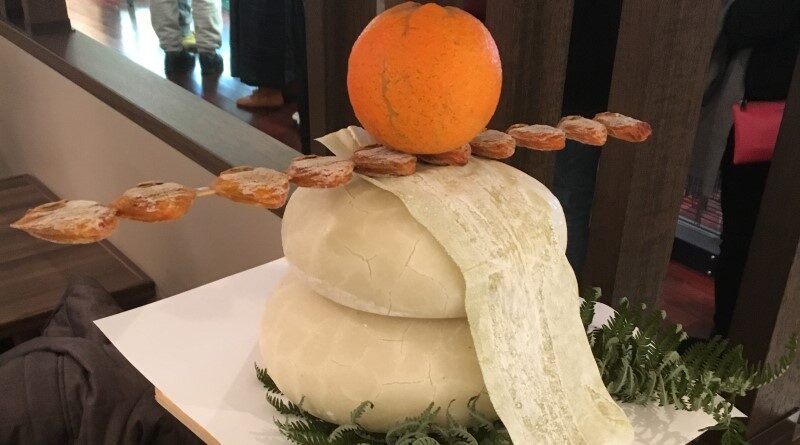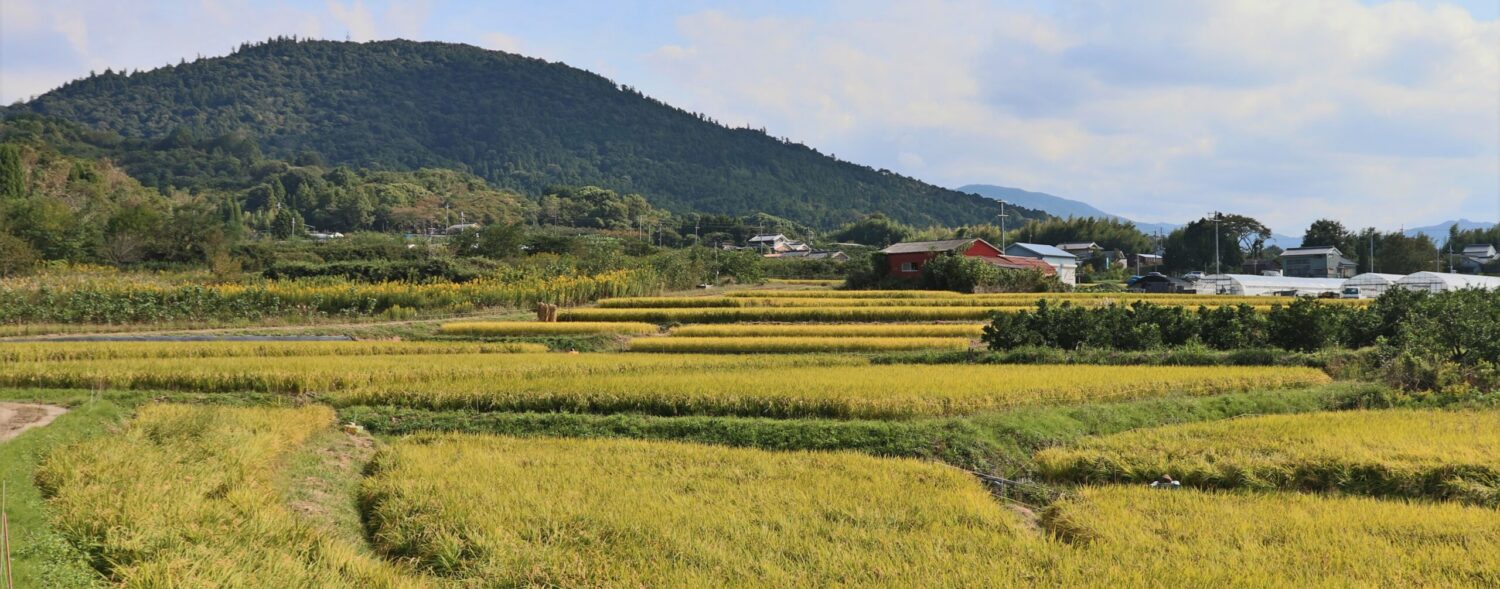
O-Shogatsu Kazari: Japanese New Year’s Decorations
No holiday is special without decorations to set the mood for the season. Japanese New Year’s decorations, O-shogatsu kazari, are an ancient tradition. The first records of O-shogatsu kazari come from the Heian Period. During the O-shogatsu season, there are three traditional types of decorations you will see adorning homes and business: Kadomatsu,Shimekazari, and Kagami-mochi.
When to Display O-shogatsu Kazari
All of these decorations are to welcome the god Toshigami[歳神], in hopes of receiving his blessing for the New Year. Many believe that Toshigami is one of Susano-o sons, combined with another god, O-Toshigami, who embodies the first sunrise on New Year’s Day. In order to make him feel welcomed, you need to prepare early!
The period for celebrating O-shogatsu is called Matsunouchi [松の内] which lasts from December 13th until around the 7th of January in Kanto or the 15th of January in Kansai. After Matsunouchi is over, all the O-shogatsu kazari must be taken to a shrine or temple and burned, known as dondo-yaki[どんど焼き].
However, because a number of Japanese families and business like to decorate for both Christmas and O-shogatsu. As a result, most people usually put off decorating for O-shogatsu until after the 25th. But putting things off so late makes things tricky. This is because it is ominous to put up decorations out on the 29th. Why the 29th? In Japanese, 29, pronounced “ni-juu-ku”, sounds like someone saying double suffering. The 31st is also no good, because the assumption is that it is too late at that point to start decorating for the coming of a god. The 30th is completely fine though.
Kadomatsu [門松]

Probably the most elaborate of the O-shogatsu decorations would be the kadomatsu. Kadomatsu, which sit around the gate or entryway, alert Toshigami that someone resides in that building and they wish to invite him inside. Kadomatsu are always sold in pairs, with the cheapest set being around 30,000 yen. These striking arrangements can consist of the following plants depending on how much you are willing to spend.
Matsu [松] (Pine)
Take [竹] (Bamboo)
Habotan [葉牡丹] (Ornamental kale)
Ume [梅] (Plum blossoms)
Nanten [南天] (Nandina/ Heavenly bamboo)
There are two common arrangements of kadomatsu, Kansai style which is the more elaborate, places the pine branches behind three stalks of bamboo, while the Kanto style gathers tufts of pine branches around the base of three bamboo stalks. Kanto style kadomatsu also usually use fewer of the other plants listed above in their designs, but may substitute with various ornaments, such as fans and woven cranes. Check out here for more examples and prices of kadomatsu.
Parts Of Kadomatsu
Pine
The very first documentations about kadomatsu are from the Heian Period. During this time, adopting Chinese customs was very popular. Pine branches, which were symbols of eternal life in China, were harvested from the forests and brought into the home. This custom became known as komatsu-biki [小松引き], resulting in pine being regarded as the most important part of a kadomatsu decoration (it does take up half the word after all). In fact, for a long time the only thing needed for kadomatsu was just a few branches of pine beside the door, and is something you will still see from time to time.

Bamboo
We aren’t really sure when people started adding bamboo to kadomatsu however, three horizontally cut bamboo stalks of alternating lengths now represent a sense of resilience as bamboo always grows straight up toward the heavens.
The tradition of cutting the bamboo diagonal is because of Tokugawa Ieyasu. Tokugawa, known in his youth by the family name Matsudaira, suffered his only military failure at the Battle of Mikata ga Hara to a man named Takeda Shingen. Enraged by his defeat, Ieyasu added bamboo that he had cut himself with his sword (hence the angled cut) to his kadomatsu as a declaration that one day he would cut down Takeda exactly as he had cut down those stalks of bamboo. Every year thereafter he added three diagonally cut pieces of bamboo to his kadomatsu, and once Ieyasu became shogun, it became fashionable to replicate his design.
Ornamental Kale and Plum Blossoms
Habotan, or ornamental kale, is usually at the base of the kadomatsu and is most common in the Kansai region. The clusters of leaves represent eternity, again relating to the verb kasaneru. Habotan is a substitute for peonies (botan in Japanese) since peonies are not only very expensive but also very delicate.
Plum blossoms, ume, are some of the very first flowers that bloom in Japan. Apart from the red and white colors being eye-catching, plum blossoms represent hope, as they are able to endure even through the harsh snowy winter.
Nanten
Nanten is a very common plant that you can find just about anywhere in Japan. From mountain trials to backyards, these clusters of red berries and green leaves are symbols of good fortune that keep evil spirits at bay.

The “nan” and “ten” of the plant’s name comes from with the words nan, meaning difficulty and ten referring to the verb tenjiru, meaning to change or divert. Therefore the plant literally represents changing one’s fortune from bad to good: nan o tenjiru [ 難を転じる]. Nanten is also a symbol to ward away sickness. The plant does contain some medicinal value and even today, some old medicines and even cough drops contain nanten extract.
Shimekazari [注連飾り]
The purpose of shimenawa is to ward off evil spirits. Shimekazari very closely resemble shimenawa, sacred prayer ropes, but shimekazari for O-shogatsu are just a little different. For one, shimekazari are not nearly as long as shimenawa. Also, in Kansai, shimekazari resemble burdock roots (gobo-jime) where one part of the rope is thicker than the other. The thick side of the shimekazari represents the world of the gods (traditionally on the left side) and the thin side represents the world of man (traditionally on the right side).The Kanto region, however, doesn’t usually opt for gobo-style ropes and instead form the rope of the shimekazari in a loop, called tama-kazari.

The bright orange fruit in the Kansai version of the O-shogatsu shimekazari is a daidai and is not your everyday orange. Daidai are in fact not sweet at all and people do not eat them. Instead they are a symbol of longevity, as the fruit can stay on their trees for 2-3 years!
Around the daidai are normally two kinds of leaves, called yuzuri-ha and urajiro. The oval shaped waxy leaves behind the daidai are the yuzuri-ha and symbolizes generational succession since once a stalk grows a set of new leaves, the old ones die shortly after.
The long fluffy leaves around the daidai, belong to the urajiro fern which is frequently used as a representation of purity and are incorporated into the shimekazari with the white underside facing out.
The zig-zag pieces of paper are kami-shide and are used in Shinto practices as a means of purification.

Kagami-Mochi [鏡餅]
Kagami-mochi is a decorative stack of rice cakes that Toshigami temporally resides in during Matsunouchi. On New Year’s Day, the kadomatsu outside someone’s home or business will attract Toshigami’s attention. Once he safely passes through the shimekazari at the door Toshigami will inhabit the kagami-mochi, endowing it with his energy. Toshigami returns to the High Plane. On the last day of O-shogatsu the mochi is consumed (known as kagami-biraki) giving the person strength to get through another year.

- Mochi is stacked for the same reason that jubako are stacked for o-sechi,that being the verb kasaneru. Represents the “mirror” of the Three Imperial Relics
- Konbu which sounds like the “kobu” of yorokobu meaning happiness.
- Urajiro represents purity.
- Daida represents longevity and represents the jewel of the Three Imperial Relics.
- Kushi-kaki is a special of the Kansai area. Represents the sword of the Three Imperial Relics.
The mochi dries over time and might even grow mold! Traditionally, someone breaks the mochi into small pieces with a wooden mallet. Also, any mold on the mochi is picked out before being eaten.
Oh, and don’t forget! You still have to take your decorations to a nearby shrine or temple so they can burn them!

Leave a Reply